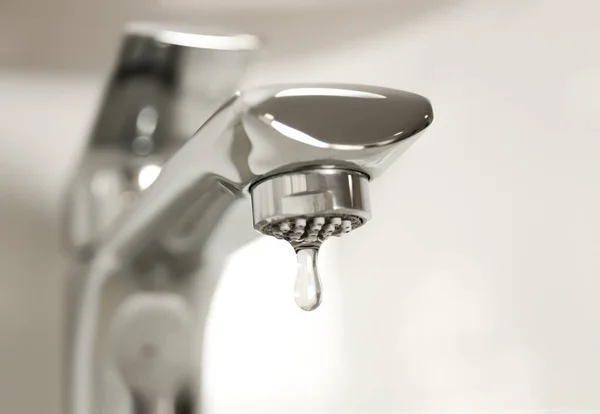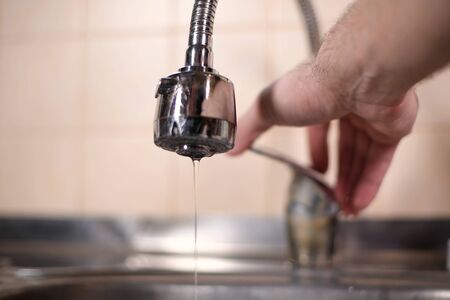Comprehensive Guide to Repairing a Leaky Tap: Skilled Tips
Comprehensive Guide to Repairing a Leaky Tap: Skilled Tips
Blog Article
We've stumbled on this great article about How-To Guide On Fixing A Leaking Tap Or Faucet Step down the page on the web and decided it made sense to relate it with you on this site.

Intro
A dripping faucet is not just bothersome yet can likewise throw away a considerable quantity of water and lead to boosted energy expenses. In this detailed overview, we'll stroll you via the process of taking care of a dripping tap, allowing you to save water and cash while keeping your plumbing system.
Gathering Tools and Materials
Prior to you start, gather the required tools and materials for the repair. You'll generally require an adjustable wrench, screwdrivers, substitute washers or seals, plumber's tape, and a rag or towel to clean up any kind of spills.
Turning Off Water Supply
Locate the shut-off valve for the affected tap and turn it clockwise to shut down the water supply. If you're unable to situate the shut-off shutoff, you might need to shut off the major water to your home.
Dismantling the Tap
Use a screwdriver to get rid of the manage of the faucet, subjecting the internal parts. Depending upon the type of faucet, you might need to unscrew a cap or collar to access the shutoff assembly.
Examining for Damages
When you have actually subjected the shutoff assembly, inspect it for any type of signs of damage or wear. Usual perpetrators of a leaking faucet include damaged washing machines, O-rings, or seals.
Replacing Faulty Parts
If you recognize any broken or damaged components, very carefully remove them utilizing a wrench or pliers and change them with brand-new ones. Be sure to utilize the right dimension and type of replacement parts for your tap.
Rebuilding the Faucet
After replacing the faulty elements, very carefully reconstruct the faucet in the reverse order of disassembly. Make sure that all components are properly straightened and tightened to stop future leaks.
Testing for Leaks
When the tap is reassembled, turn the water system back on and test the faucet for leakages. If you discover any leakages, double-check the links and tighten them as needed.
Guaranteeing Appropriate Performance
After validating that the faucet is leak-free, test its capability by turning it on and off a number of times. Make certain that the faucet operates smoothly and without any unusual audios or resistance.
Tidying up
Lastly, tidy up any kind of debris or spills from the repair service process and deal with any old or broken elements properly. Leaving the work area spick-and-span guarantees an expert coating to your repair service.
Verdict
Fixing a leaky tap is a relatively basic do it yourself job that can conserve you cash on water bills and avoid additional damages to your plumbing system. By following this detailed overview, you can tackle the repair work with self-confidence and enjoy the benefits of a leak-free tap.
Fixing a Leaking Tap: Causes, Solutions, and Water Conservation
Causes and Signs
Worn-Out Washers: The tap washer, rubber or metal, creates a seal within the tap assembly. Over time, the old washer can deteriorate, leading to water seepage and a dripping tap. High Water Pressure: Excessive water pressure can strain tap components, causing leaks. The forceful water flow exerts pressure on the washers and other sealing mechanisms, resulting in a dripping tap. Faulty O-Rings: O-rings, usually made of rubber, provide a watertight seal between moving parts of the tap. If the O-rings become worn or loose, they can cause water to leak, resulting in a dripping tap and potential water damage to your property. Signs of a Dripping Tap
Audible Dripping Sounds: If you hear the sound of water droplets hitting the sink or basin, it’s a clear indication of a dripping tap. Puddles or Stains: Notice any puddles of water or stains around the tap area or on the sink surface. These signs suggest a dripping tap that requires attention. Reduced Water Flow: A dripping tap can affect the overall water flow, resulting in reduced pressure when using the tap. Gather the Necessary Tools
Adjustable spanner Screwdriver – flathead or Philips’s head New washers Towels or rags Turn Off the Water Supply
Find the isolation valve beneath the sink or by the tap and turn it clockwise to shut off the water supply.
Disassemble the Tap
Use a screwdriver to carefully remove the tap handle, exposing the internal components. Take note of the order and arrangement of the parts as you disassemble the tap. This will aid in reassembling it correctly later on. (We recommend taking photos on your phone for a no-fuss solution).
Inspect and Replace the Washer
Inspect the washer located at the bottom of the tap assembly. If it appears worn out or damaged, replace it with a new washer of the correct size and type. This simple replacement can often resolve the dripping tap issue.
Tips for Responsible Water Usage
Regular Inspection and Maintenance: Conduct periodic inspections of all taps in your home to identify potential leaks or drips. Timely repairs prevent water wastage and maintain the efficiency of your plumbing system. Install Water-Efficient Taps: Consider replacing old taps with water-efficient models that are designed to minimise water consumption. Look for taps equipped with aerators and flow restrictors to regulate water flow without compromising functionality. Conscious Water Usage: Develop mindful habits such as turning off the tap while brushing your teeth or soaping your hands. Additionally, use full loads when running dishwashers and washing machines to maximise water efficiency. Monitor Your Water Bill: Keep track of your water consumption by regularly monitoring your water bill. Any sudden increases may indicate a leaking tap or other issues that require attention. When to Seek Professional Help
Persistent Leaks: If your attempts to fix the dripping tap are unsuccessful or the problem keeps recurring, it may indicate an underlying issue that requires professional attention. Complex Repairs: In cases where the tap assembly is intricate, or the repair involves specialised knowledge, it’s advisable to seek professional help to ensure the problem is resolved effectively. https://proudplumbingandgas.com.au/blog/a-complete-guide-to-fixing-a-leaking-tap/

As an enthusiastic reader about How to Fix a Leaky Faucet, I imagined sharing that piece of content was really helpful. Sharing is caring. Helping people is fun. Thanks a bunch for your time. Come back soon.
Call Today Report this page